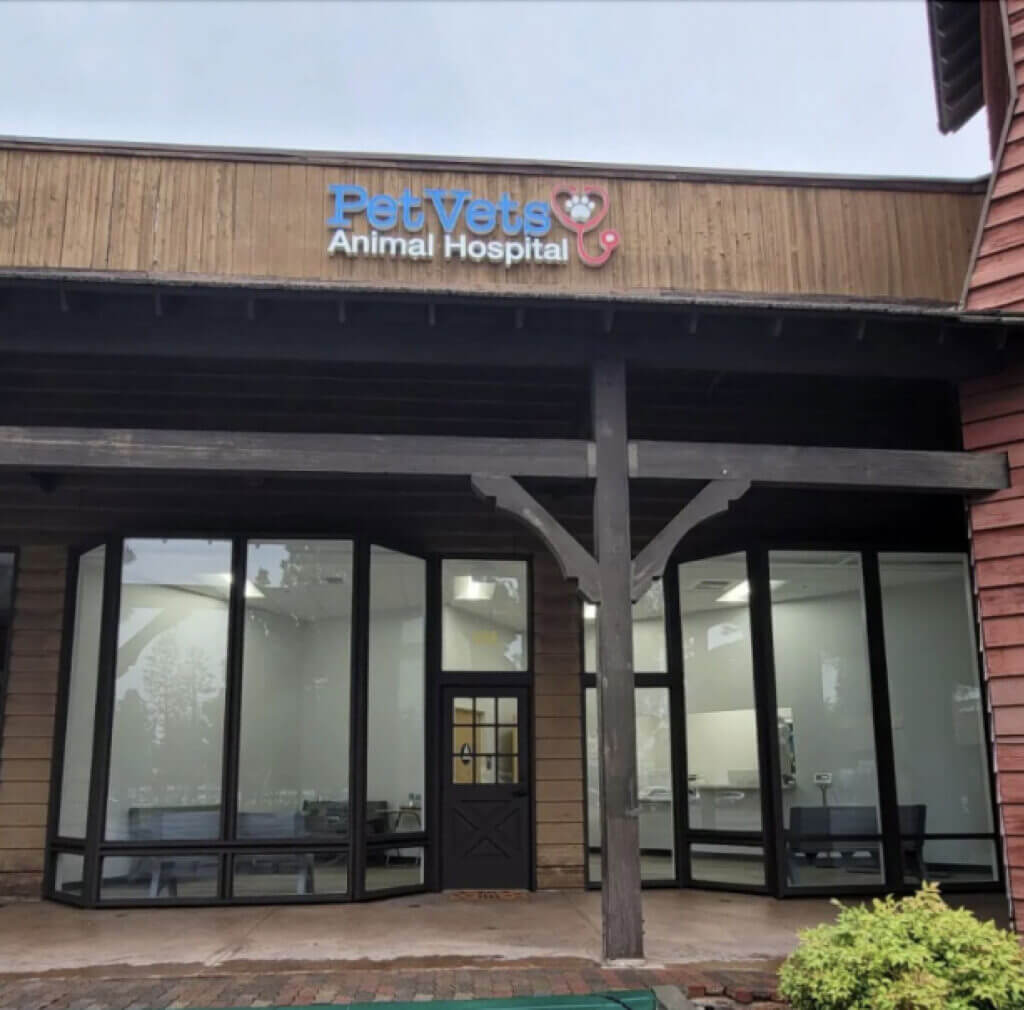Dog ACL Repair With TPLO
in San Dimas, CA
Anterior cruciate ligament (ACL) rupture is a common orthopedic injury among dogs, causing pain, lameness, and discomfort.
Understanding the clinical signs, treatment options such as tibial plateau leveling osteotomy (TPLO), and the recovery process is essential for dog owners facing this challenge with their beloved pets.
What Are the Clinical Signs of ACL Rupture in Dogs?
Recognizing the signs of ACL rupture is crucial for early intervention. Dogs with this injury typically exhibit lameness, reluctance to bear weight on the affected leg, and swelling around the knee joint. Additionally, they may display signs of pain, such as limping or favoring one leg over the other. In some cases, a popping sound may be heard at the time of injury. It’s important to consult a veterinarian promptly if any of these signs are observed.
Treatment of ACL Rupture With TPLO Technique
The TPLO technique is a surgical procedure commonly used to stabilize the knee joint following ACL rupture in dogs. This procedure involves altering the angle of the top portion of the tibia bone to reduce the instability caused by the torn ligament. Here’s how the TPLO technique works:
- Preoperative Evaluation: Before surgery, the dog undergoes a thorough examination, including radiographs, to assess the extent of the injury and to ensure the suitability of the TPLO procedure.
- Surgical Procedure: During TPLO surgery, the veterinarian makes an incision over the knee joint and carefully accesses the tibia bone. Using specialized equipment, the surgeon cuts the bone and rotates the top portion to achieve the desired angle, which reduces the need for the ACL and stabilizes the joint.
- Implant Placement: Once the desired angle is achieved, metal implants such as screws or plates are used to secure the repositioned bone in place.
- Postoperative Care: After surgery, the dog requires careful monitoring and postoperative care, including pain management, restricted activity, and physical therapy to aid in recovery.
What Can I Expect During My Dog’s Recovery After ACL Surgery?
The recovery period following TPLO surgery is critical for the dog’s long-term well-being and successful rehabilitation. Here are key aspects of the recovery process:
- Pain Management: Adequate pain management is essential to ensure the dog’s comfort during the initial stages of recovery. Veterinarians may prescribe pain medications and anti-inflammatories to alleviate discomfort.
- Restricted Activity: To allow the surgical site to heal properly, dogs must adhere to a strict activity restriction regimen. This typically involves minimizing movement, avoiding jumping or running, and using a leash to control activity levels during walks.
- Physical Therapy: Physical therapy plays a vital role in the dog’s recovery by promoting muscle strength, joint mobility, and overall function. Rehabilitation exercises may include passive range of motion, gentle stretching, and controlled walking on even surfaces.
- Gradual Return to Activity: As the dog’s condition improves, gradual reintroduction to activity is necessary. This process should be guided by the veterinarian and tailored to the individual dog’s progress and tolerance levels.
Dog ACL Repair With TPLO at PetVets Animal Hospital
ACL rupture is a challenging condition for dogs, but with prompt diagnosis, appropriate treatment such as TPLO surgery, and diligent postoperative care, many dogs can regain function and lead active, pain-free lives. Collaboration between veterinarians and pet owners is essential for achieving the best possible outcome for dogs affected by this common orthopedic injury.
Frequently Asked Questions About ACL Repair with TPLO
-
How long does it take for a dog to recover from TPLO surgery?
The recovery period varies depending on factors such as the dog’s size, age, overall health, and the extent of the injury. In general, dogs typically start to show improvement within the first few weeks post-surgery, but full recovery may take several months.
-
Can ACL rupture in dogs heal without surgery?
While some dogs may experience partial healing and improved function with conservative management, such as rest, pain management, and physical therapy, surgical intervention is often recommended for long-term stability and prevention of degenerative joint disease.
-
Are there any complications associated with TPLO surgery?
Like any surgical procedure, TPLO surgery carries potential risks and complications, including infection, implant failure, delayed healing, and the development of arthritis. However, with proper preoperative evaluation, surgical technique, and postoperative care, the risk of complications can be minimized.

